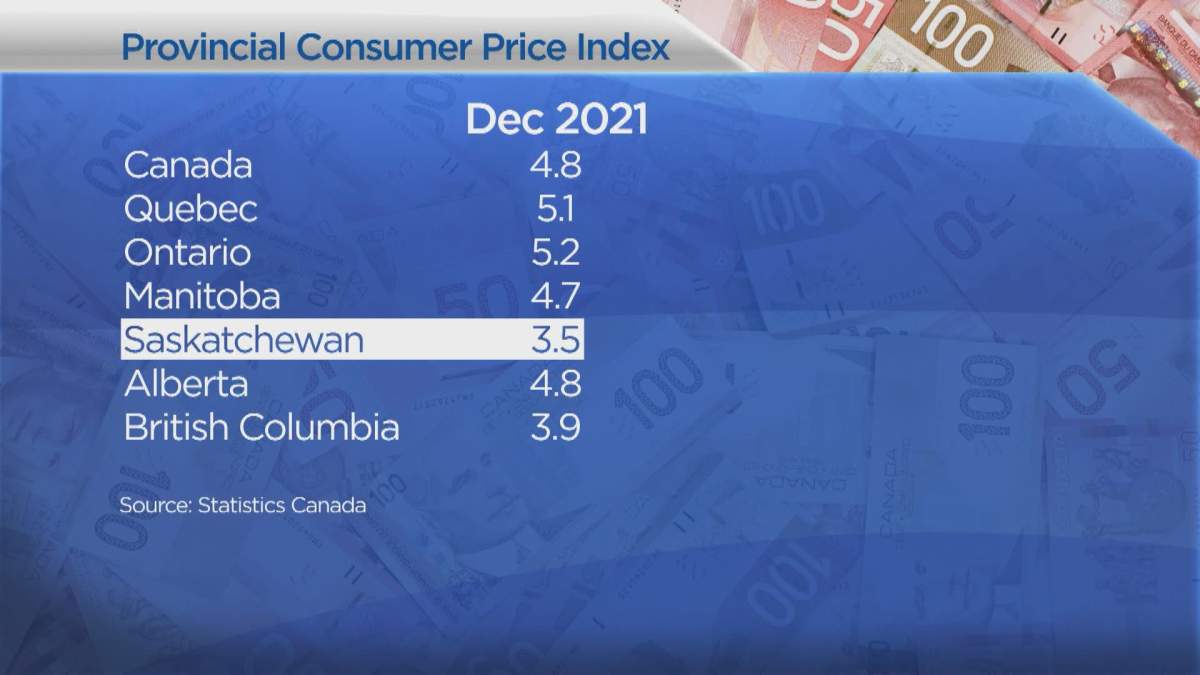Not since 1991 has Canada seen a rate of inflation like the one it’s currently facing.

Statistics Canada says the annual pace of inflation climbed to a 30-year-high in December.
A 4.8-per cent annual increase on inflation rates does not come as a shock for some, considering that December marked nine months in a row that headline inflation has come in above the Bank of Canada’s target zone of between one and three per cent.
The biggest drivers of inflation were transportation rising nearly 9 per cent, shelter up 5.4 per cent and food going up by 5.2 per cent.
However, when comparing provincial inflation rates it’s evident that Saskatchewan is better off than its provincial counterparts.
In fact, Saskatchewan’s year-over-year inflation rate for December was 3.5 per cent, the lowest among all Canadian provinces.

Get breaking National news
Jason Childs, an associate economics professor at the University of Regina, explains why Saskatchewan is faring much better.
“Saskatchewan is seeing a major advantage in terms of shelter. Nationwide shelter increased in cost by about 5.5 per cent, a little over 6 per cent in Ontario but just 2.25 per cent in Saskatchewan,” Childs explained.
Childs added that, “We don’t have the same buildings restrictions, we’re not paying the same prices, we’re not seeing those massive increases in housing costs as other jurisdictions like Montreal, Toronto and Vancouver.”

Childs also sees the province on the verge of another employment boom with major infrastructure projects getting the go-ahead in the mining and agricultural sector.
Those factors alongside the lower inflation rates could be quite appealing for the province, Childs said, saying, “That will draw people in and will have a positive impact on housing prices.
“We aren’t going to be as cheap for long if we want to grow.”









Comments